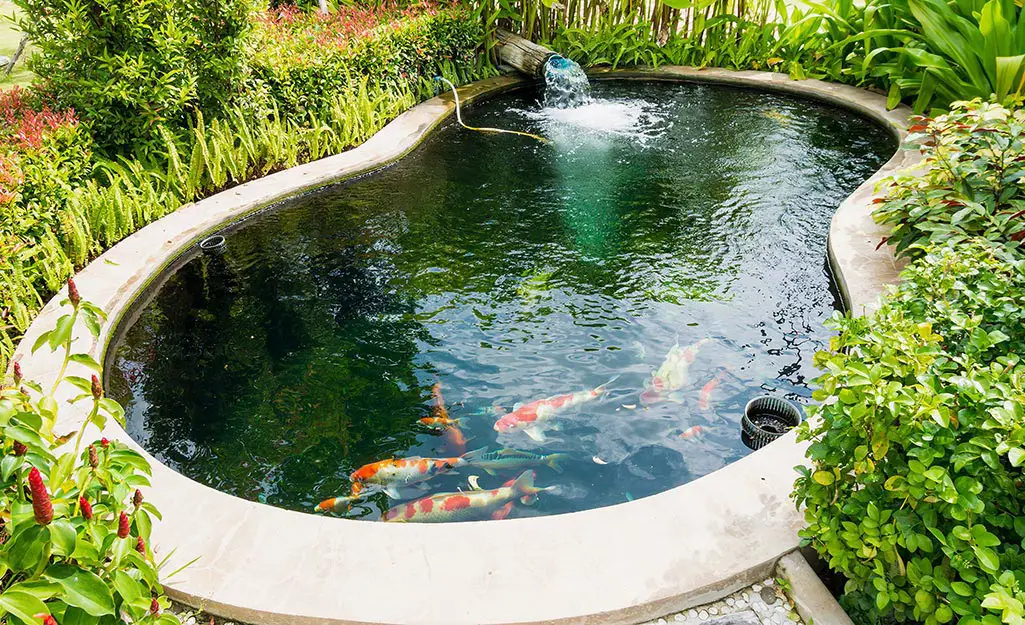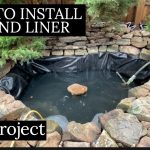Creating an outdoor goldfish pond can be a rewarding and tranquil addition to your garden or backyard. Not only does it provide a beautiful focal point, but it also offers a peaceful and serene environment for these colorful and fascinating aquatic creatures. Whether you’re a seasoned pond enthusiast or a beginner looking to embark on your first pond project, this comprehensive guide will walk you through the essential steps to build your very own outdoor goldfish pond.
1. Planning and Design
Before breaking ground, it’s crucial to carefully plan and design your goldfish pond. Consider the size, location, and overall aesthetic you want to achieve. Determine whether you want a formal or naturalistic pond, as this will influence the layout and choice of materials. Take into account the surrounding landscape and how the pond will complement the existing environment.
Once you have a clear vision of the pond’s design, create a detailed plan that includes the pond’s dimensions, depth, and shape. Consider factors such as sunlight exposure, proximity to trees, and the potential for debris to fall into the pond. These considerations will help you make informed decisions about the pond’s placement and construction.
2. Selecting the Location
Choosing the right location for your goldfish pond is crucial for its long-term success. Look for a spot that receives a good balance of sunlight and shade throughout the day. Avoid areas with overhanging trees or where runoff from the surrounding landscape may flow into the pond. Additionally, ensure that the location allows for easy access for maintenance and cleaning.

Credit: www.youtube.com
3. Excavation and Shaping
With the design and location finalized, it’s time to begin the excavation process. Use spray paint or a garden hose to outline the shape of the pond on the ground. Start digging according to the planned dimensions, keeping in mind the desired depth for the pond. As you dig, create shelves or varying depths to provide different habitats for the goldfish and other aquatic plants.
Once the excavation is complete, carefully shape the pond’s edges to create a natural-looking shoreline. Consider incorporating gentle curves and irregularities to mimic the appearance of a natural water feature. This will enhance the visual appeal of the pond and provide more surface area for aquatic plants.
4. Installing the Pond Liner
After the pond has been excavated and shaped, it’s time to install the pond liner. Select a high-quality, fish-safe liner that is durable and resistant to punctures. Lay the liner carefully into the excavated area, ensuring that it adequately covers the entire pond and extends up the sides. Smooth out any wrinkles or folds in the liner to create a snug fit against the contours of the pond.
5. Adding Filtration and Circulation
Proper filtration and circulation are essential for maintaining a healthy and balanced aquatic environment in your goldfish pond. Install a reliable filtration system that includes mechanical and biological filtration to remove debris and promote the growth of beneficial bacteria. Additionally, consider adding a submersible pump to create gentle water movement and aeration.

Credit: www.gameandfishmag.com
6. Adding Aquatic Plants
Aquatic plants not only enhance the visual appeal of the goldfish pond but also play a vital role in maintaining water quality and providing habitat for the fish. Choose a variety of submerged, floating, and marginal plants to create a balanced ecosystem. Submerged plants, such as anacharis and hornwort, help oxygenate the water, while water lilies and lotus add beauty and shade to the pond’s surface.
7. Introducing Goldfish
With the pond fully prepared, it’s time to introduce goldfish to their new aquatic home. When selecting goldfish for your pond, opt for hardy and colorful varieties that are well-suited to outdoor pond environments. Ensure that the water temperature is suitable for the goldfish and acclimate them to the pond water before releasing them into their new habitat.
8. Maintenance and Care
Maintaining a healthy goldfish pond requires regular care and attention. Monitor water quality parameters such as pH, ammonia, and nitrite levels to ensure a safe and comfortable environment for the fish. Perform routine maintenance tasks, including removing debris, trimming plants, and cleaning the filtration system to prevent the buildup of organic matter.
Additionally, be mindful of seasonal changes and adjust your maintenance routines accordingly. During the winter, for example, you may need to install a pond heater or aerator to prevent the water from freezing completely and to maintain a suitable environment for the goldfish.
9. Enjoying Your Goldfish Pond
Once your outdoor goldfish pond is established and thriving, take the time to sit back, relax, and enjoy the beauty and tranquility it brings to your outdoor space. Whether you’re observing the graceful movements of the goldfish, listening to the gentle sound of water, or simply admiring the lush aquatic plants, your goldfish pond is sure to become a captivating and cherished feature of your garden.
Conclusion
Building an outdoor goldfish pond is a fulfilling endeavor that allows you to create a captivating aquatic ecosystem right in your own backyard. By carefully planning, designing, and constructing your goldfish pond, you can enjoy the beauty and serenity of a natural water feature while providing a safe and comfortable habitat for these enchanting aquatic creatures. With proper care and maintenance, your goldfish pond will continue to thrive and bring joy to your outdoor space for years to come.





